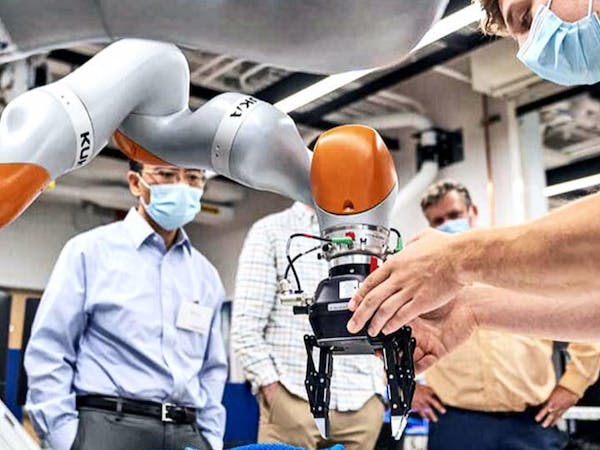To get robots to learn in much the same fashion as humans, engineers from the University of Michigan have developed an approach that allows robots to work with soft materials, like rope and fabrics, with increased performance. In simulations, the larger training data sets doubled the success rate of a robot looping a rope around an engine block and improved it by more than 40% from that of a physical robot executing the same task. The novel method could cut learning time for robots working with new materials and working in new environments down from weeks to just hours.
“That task is among those a robot mechanic would need to be able to do with ease,” explains Dmitry Berenson, associate professor of robotics at UM. “But using today’s methods, learning how to manipulate each unfamiliar hose or belt would require huge amounts of data, likely gathered for days or weeks.” During that time, the robot would manipulate that rope until it understood the number of ways the hose could move and contour, a long, drawn-out process.
To reduce that amount of time, the team altered an optimization algorithm to enable a computer to make some of the generalizations we humans do, such as predicting how dynamics observed in one instance might repeat in others. In one example, a robot pushed cylinders on a surface populated with obstacles. During trial runs, the cylinder didn’t hit anything, while in others, the cylinder collided with other cylinders, moving those in the process. If the cylinder didn’t collide with anything, that motion could be repeated anywhere on the table where the trajectory doesn’t bump into other cylinders. While this is intuitive for humans, robots need to garner that data. Rather than performing time-consuming experiments, the engineer’s program can create variations on the initial result from that first experiment that the robot can utilize in the same fashion.
To produce that fabricated data, the engineers focused on three qualities: it needed to be relevant, diverse and valid. For example, if the focus is centered on moving cylinders on a table, then information on the floor is not relevant. That data must also be valid, so simulations with two cylinders occupying the same space would be invalid and need to be identified so that the robot knows it isn’t possible.
The engineers put their findings to the test for the rope simulation by expanding the data sets using the extrapolated position of the rope to other locations in a virtual environment and having the rope behave the same way it did in the initial experiment. Using traditional training methods showed that the robot could wrap the rope around an engine block 48% of the time while using their new method pushed that success rate to 70%.
